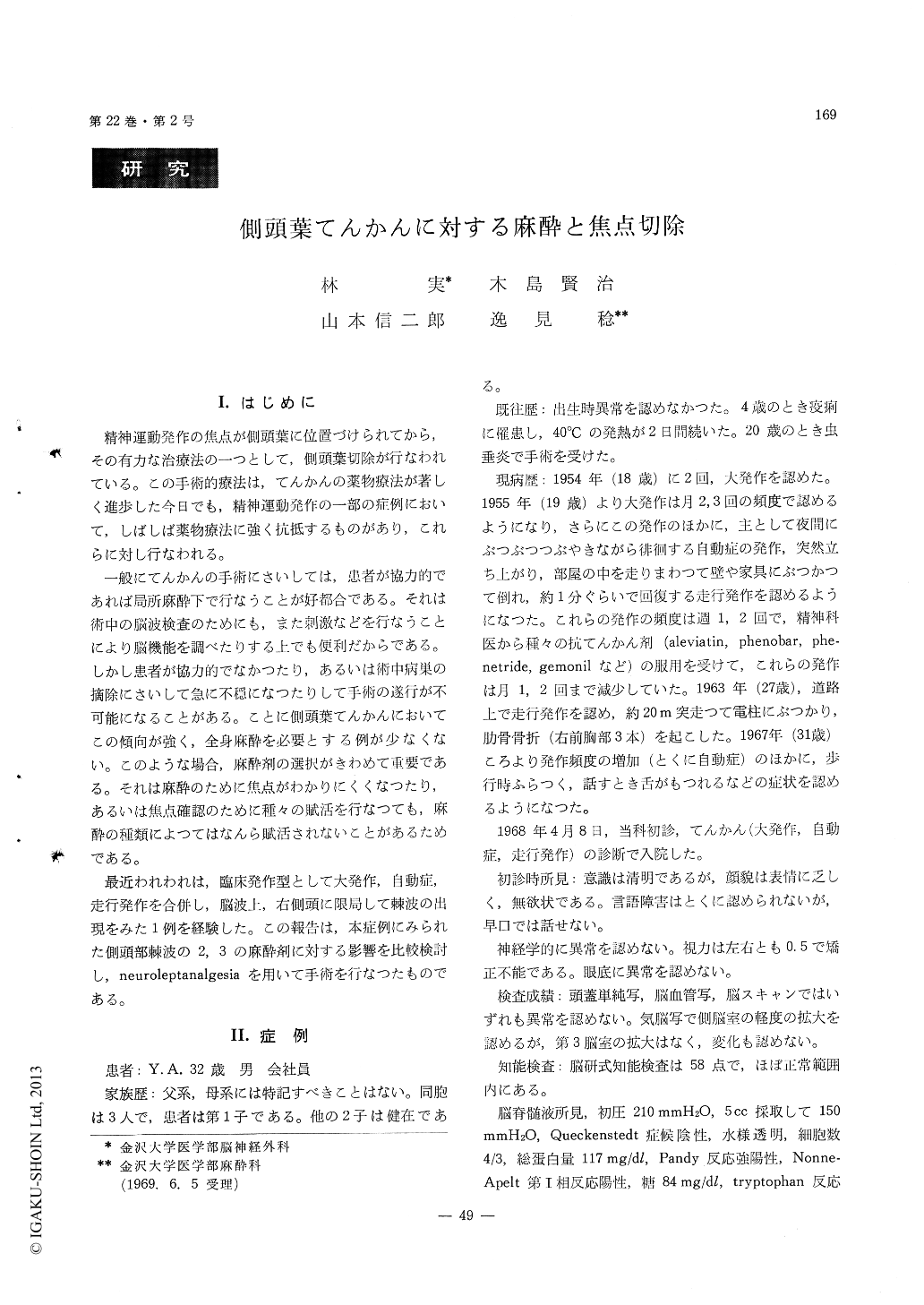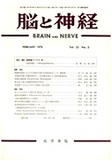Japanese
English
- 有料閲覧
- Abstract 文献概要
- 1ページ目 Look Inside
I.はじめに
精神運動発作の焦点が側頭葉に位置づけられてから,その有力な治療法の一つとして,側頭葉切除が行なわれている。この手術的療法は,てんかんの薬物療法が著しく進歩した今日でも,精神運動発作の一部の症例において,しばしば薬物療法に強く抗抵するものがあり,これらに対し行なわれる。
一般にてんかんの手術にさいしては,患者が協力的であれば局所麻酔下で行なうことが好都合である。それは術中の脳波検査のためにも,また刺激などを行なうことにより脳機能を調べたりする上でも便利だからである。しかし患者が協力的でなかつたり,あるいは術中病巣の摘除にさいして急に不穏になつたりして手術の遂行が不可能になることがある。ことに側頭葉てんかんにおいてこの傾向が強く,全身麻酔を必要とする例が少なくない。このような場合,麻酔剤の選択がきわめて重要である。それは麻酔のために焦点がわかりにくくなつたり,あるいは焦点確認のために種々の賦活を行なつても,麻酔の種類によつてはなんら賦活されないことがあるためである。
A 32 year-old male of a temporal lobe epilepsy was presented to investigate the effects of anesthe-sias (nitrous oxide, halothane and neuroleptanalgesia) on temporal spikes.
1) Nitrous-oxide gave little suppressive effect on temporal spikes while it elevated the threshold of bemegride activation.
2) Halothane eliminated the epileptic discharges, elevating the threshold for bemegride activation.
3) Neuroleptanalgesia by means of haloperidol and pethidine increased the epileptic discharges and lowered the threshold for bemegride activation.
4) The patient was operated on under neuro-leptanalgesia and the complete removal of the epileptogenic focus was made.

Copyright © 1970, Igaku-Shoin Ltd. All rights reserved.


